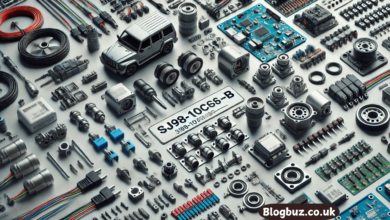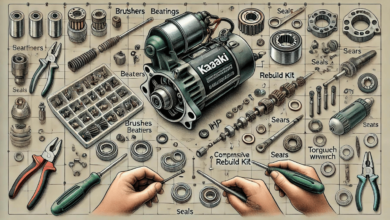Difference Between Interim Service and Full Service: A Complete Vehicle Maintenance Guide

Proper vehicle maintenance is essential for guaranteeing safety, optimal performance, and long-term cost savings. Whether you’re a seasoned driver or a new car owner, one of the most common dilemmas faced during car ownership is choosing between an interim service and a full service. Understanding the difference between interim service and full service can help you make the right decision at the right time. In this comprehensive guide, we’ll explore what each type of service includes, how often they should be done, the costs involved, and which one your car needs.
What Is Vehicle Servicing?
Before diving into specifics, let’s briefly define what “vehicle servicing” actually means. Servicing is a series of checks, maintenance, and replacements performed on a car to ensure it is functioning correctly and safely. It goes beyond an MOT test, which only checks if your vehicle meets minimum road safety and environmental standards.
There are two major types of services offered by garages and dealerships:
- Interim Service
- Full Service
What Is an Interim Service?
An interim service is a basic maintenance check-up designed for cars that are driven more frequently than average or cover long distances regularly. It helps keep essential parts of the vehicle in good condition between annual services.
What Does an Interim Service Include?
Although specific checks vary by garage, most interim services include:
- Oil and oil filter change
- Fluid level checks and top-ups
- Brake fluid
- Coolant/antifreeze
- Power steering fluid
- Windscreen washer
- Brake inspection
- Tire check
- Tread depth
- Air pressure
- Lights, indicators, and horn check
- Windscreen wiper check
- Visual inspection of the engine, exhaust, and other key parts
How Often Should You Get an Interim Service?
Interim services are typically recommended every 6 months or 6,000 miles (10,000 kilometers), whichever comes first.
Typical Cost of an Interim Service
The cost can vary depending on the car model and garage, but it usually ranges between £70 and £120 (or $90 and $150 in the U.S.).
What Is a Full Service?
A full service, often referred to as an annual service, is a comprehensive inspection and maintenance routine for your vehicle. It builds upon the checks carried out in an interim service with more in-depth analysis and replacements.
What’s Included in a Full Service?
A full service typically includes everything in the interim service, plus additional checks and replacements, such as:
- Air filter replacement
- Fuel filter (diesel engines)
- Spark plug replacement (petrol engines)
- Battery condition check
- Detailed brake inspection
- Suspension and steering checks
- Drive belt inspection
- Wheel alignment check
- Exhaust system inspection
- Cooling system check
- Detailed engine diagnostics
How Often Should You Get a Full Service?
Most manufacturers recommend a thorough service every 12 months or 12,000 miles (20,000 kilometers), whichever occurs first.
Typical Cost of a Full-Service
Costs vary depending on the vehicle type and location, but you can expect to pay between £150 and £250 (or $200 to $400 in the U.S.).
Key Differences Between Interim Service and Full Service
Here is a side-by-side comparison to make things clearer:
| Feature | Interim Service | Full Service |
|---|
| Frequency | Every 6 months or 6,000 miles | Every 12 months or 12,000 miles |
| Service Level | Basic maintenance | Comprehensive maintenance |
| Oil & Filter Change | ✔️ | ✔️ |
| Fluid Top-Ups | ✔️ | ✔️ |
| Brake Inspection | Basic | Detailed |
| Air Filter Replacement | ❌ | ✔️ |
| Battery Condition Check | ❌ | ✔️ |
| Spark Plugs | ❌ | ✔️ (Petrol engines) |
| Suspension Check | ❌ | ✔️ |
| Exhaust Inspection | ❌ | ✔️ |
| Engine Diagnostics | ❌ | ✔️ |
| Cost Range | £70–£120 / $90–$150 | £150–£250 / $200–$400 |
| Time Taken | 1–2 hours | 3–4 hours |
Why Regular Servicing Matters
Whether interim or full, vehicle servicing is essential. Here are some key benefits:
Improved Safety
Regular checks catch potential issues, such as worn brakes or under-inflated tires, before they become safety hazards.
Better Fuel Efficiency
A well-serviced engine runs more efficiently, helping you get more miles per gallon and reducing emissions.
Enhanced Vehicle Longevity
Routine maintenance helps prevent major component failures, extending the lifespan of your car.
Higher Resale Value
A complete service history enhances the resale value of your vehicle and makes it more appealing to potential buyers.
Which One Do You Need: Interim or Full?
Here’s how to decide:
Choose an Interim Service if:
- You drive more than 12,000 miles per year
- Your car has recently had a full-service
- Do you want a mid-year checkup
Choose a Full Service if:
- It’s been 12 months since your last full service
- You are preparing for a long trip
- Your vehicle is exhibiting signs of performance issues (noise, vibration, slow start)
Expert Tip: Follow the Manufacturer’s Service Schedule
Always consult your vehicle’s handbook. Manufacturers provide specific service intervals and may require certain checks to maintain warranty coverage.
Can You Combine MOT and Full Service?
Yes! Many UK garages offer combined MOT and complete service packages at discounted rates. This is an efficient way to ensure your car is both legally compliant and in top condition.
Frequently Asked Questions
Do I need a full service every year?
Yes, even if you drive less than 12,000 miles. Age affects oil, rubber seals, and other components regardless of mileage.
Will missing an interim service harm my car?
Although it may not be harmful in the short term, regularly skipping interim services can lead to unnoticed wear and tear, resulting in expensive repairs.
Are interim services necessary for electric vehicles?
EVs have fewer moving parts but still benefit from interim checks for tires, brakes, cooling systems, and battery health.
Final Thoughts: Interim vs Full Service
The difference between interim service and full service boils down to depth and frequency of service. An interim service is a helpful mid-year check for busy drivers. In contrast, full-service maintenance is the gold standard, keeping your vehicle safe, efficient, and reliable throughout the year.
You May Also Read: The Importance of the Nissan K24 Propane Shutoff Valve in Vehicle Safety and Efficiency




